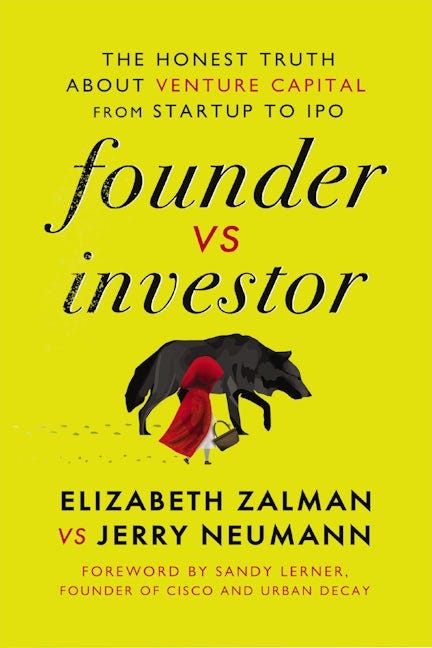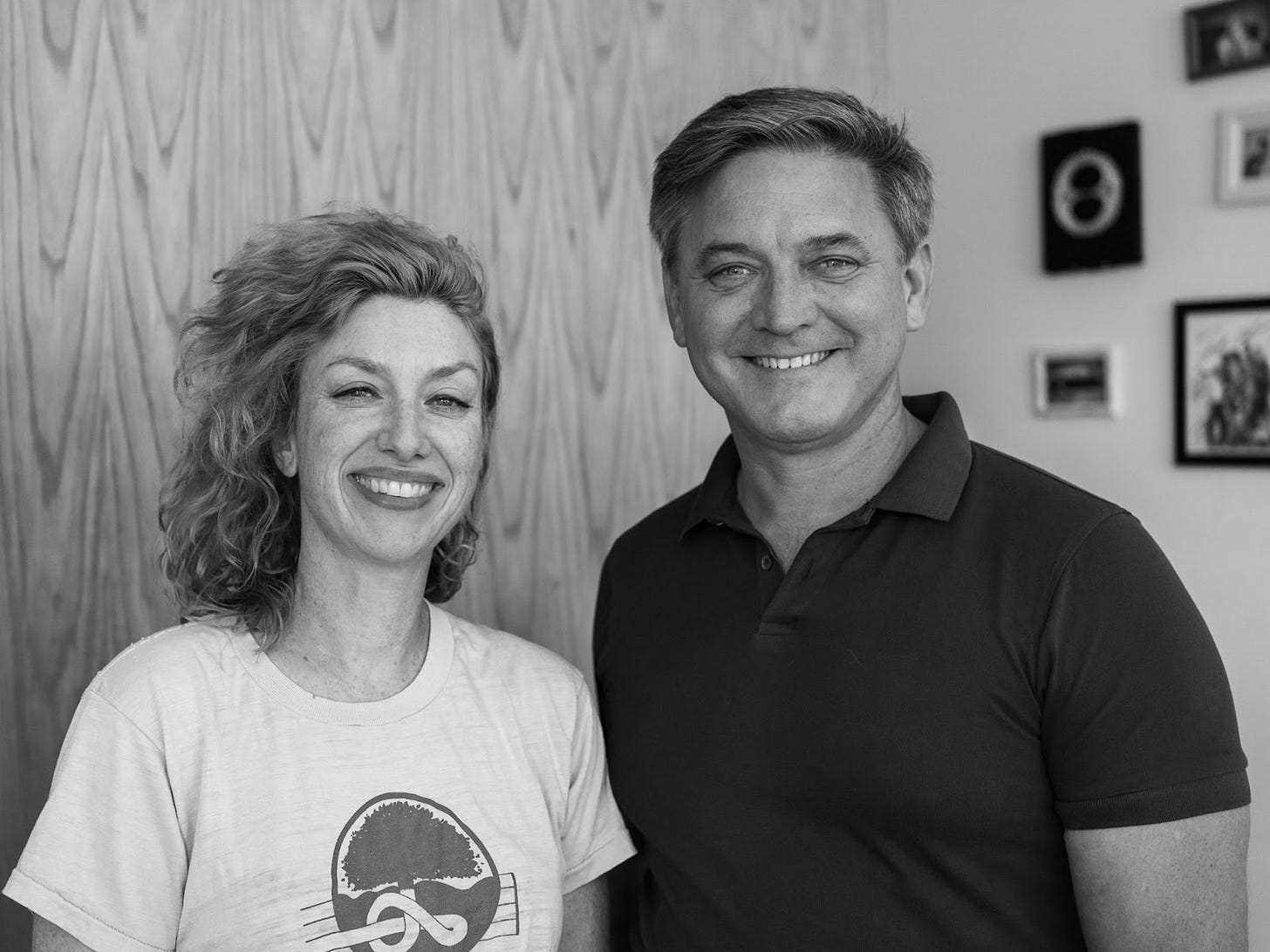I’ve spent most of my career working with startups, first as an investor, deciding what companies to partner with. Then, as an operator, turning an idea into a product into a company. And now, as the co-founder of my own venture firm, doing a bit of both!
Having experienced both sides of the table, I've seen the good, bad, and ugly of the investor-founder relationship. So when my friend Liz Zalman, a repeat founder and CEO, said she was writing a book about the relationship between founders and investors with Jerry Neumann, a 25-year legend of venture capital who has invested in companies including Datadog, StrongDM (one of Liz’s companies), and Trade Desk, I couldn’t wait to get my hands on it (especially since I also love to read!)
I got an advance copy of Founder Vs Investor: The Honest Truth About Venture Capital from Startup to IPO and thoroughly enjoyed it! It presents both sides of the table authentically and openly. I love the format of the book, as it very much feels like a conversation between Liz, the ‘Founder’, and Jerry, the ‘Investor’. It’s easy to read despite being very detailed, proactively addresses the unsaid things between founders and investors on a host of major topics ranging from fundraising to growth, and serves as a wonderful explainer with actionable tips, tricks, and takeaways for both founders and investors.
Ahead of the book’s launch, I had the chance to ask Liz and Jerry some questions about the book.
How did you first decide to write it together and in this manner?
Jerry: I wrote a blog post called “Your Board of Directors is Probably Going to Fire You” about two years ago. It really seemed to strike a nerve with founders. It hit the top of Hacker News and I had some 30,000 people read it in a few hours. Liz called me and said it was something she wished she had read when she was first getting started and why wasn’t there more content like this? The answer was that the VCs who usually read my blog hated the post and pushed back on me about it. And they had valid points: I was frustrated when I wrote it, and it showed. I had this weird feeling of holding two opposing views in my head and believing both were right at the same time. So that’s what we decided the book should be.
Share some of the writing process. How did you decide what to include, what topics to address, and who got to ‘have the last word’ in each chapter?
Liz: We did the outline collaboratively, talking about stories we had heard and had personally lived through that showed founder/investor tension. Writing it was a more iterative process. We used Google Docs so we could write in the same document. I would write something and Jerry would comment “Do you really believe this?!” and I would tell him to suck it and then he would respond in his section. But whenever one of us started to try to compromise, the other would tell them to stick to what they believed, because that’s what we were trying to do with the book…show what people are thinking when they’re not being forced to compromise.
Is there a particularly memorable anecdote, topic, or debate you left while editing on the cutting room floor?
Jerry: Not really. The stories in the book are pretty raw! Of course, we had to anonymize them at the lawyers’ insistence and we’re going to stick to that. Unless you ply us with alcohol…
The book is structured in the format of a company’s lifecycle: Fundraising, Terms, Board of Directors, Growth, Exits, and so on. How do you envision someone reading it? Start to finish (like I did), or more of a guidebook to pick up and refer to a specific chapter? I know I’m going to recommend people starting with the last chapter, Red and the Wolf.
Liz: Oh, that’s interesting! Leading with the conclusion… or more specifically, that chapter certainly shows the influence Jerry and I had on the others’ thinking. I think the whole book is fun and digestible! But I’d suggest people start with the authors’ note and chapter one so they understand how the book is structured and why we’re not agreeing. Every other book is out there telling people “This is the right answer.” We’re saying there is no right answer, you have to understand the issue from both sides. Everyone should read the fundraising, board, and exits chapters because those are issues all founders need to understand. The terms and growth chapters you could wait to read until you are about to have those problems.
I firmly believe venture and startups are a people business. You both talk throughout the book about the importance of trust with your investors. The last few years saw founder-investor relationships materialize over a matter of days or hours. Should founders and investors take more time to get to know one another? Or, if you’re a founder and you’ve got heat, press the advantage and get the money in the door?
Jerry: I think this is one of the places where we disagree. As an investor, I say, absolutely! You are going into a long—potentially ten-year—partnership with the other person. Take some time to get to know them so you can better predict how they will act when times get tough. So much of your success depends on being able to work through problems together, don’t leave the relationship up to chance.
Liz: I do disagree! Founders need to spend their time building the company not schmoozing investors. They need to treat the fundraise transactionally. Of course, they need to do diligence on potential investors, but they can do that better by talking to founders the investor has backed before and asking hard questions about where the investors were amazing and where they fell down. Then, get the terms in the term sheet right, and then make sure the investors are doing their job helping the company succeed.
As you can probably tell, the book is a very honest take on an important relationship between founders and their funders, and I strongly recommend both founders and investors give it a read. And as a special treat for Taps’ Notes subscribers, click here to get a PDF excerpt from the book, outlining Liz’s Absolutes of Fundraising.
To get yourself a copy of Founder vs. Investor, click here. To see more from Liz, follow her on LinkedIn. And to see more from Jerry follow him on LinkedIn, subscribe to his blog, and follow him on X.





